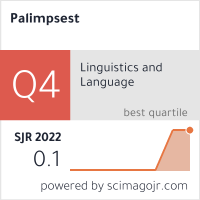THE USAGE OF THE PHRASEOLOGICAL EXPRESSIONS IN TEACHING
DOI:
https://doi.org/10.46763/PALIM22714203jAbstract
The increased usage of the conversational elements in styles that represent the official communication imposes the examination of teachers’ language expression during the teaching classes, regarding the PE. From here, the paper answers one research questions: What language teachers use regarding the PE during the teaching class? The sample consists of 40 observed classes in different teaching subjects conducted by 15 teachers over 30 years old and a survey with two open questions with respect to their perception of their own language expression, regarding the standard language norm and the PE. The analysis rests on the coding of the answers and the general qualitative interpretative-inductive approach. The results show that teachers use PE during the teaching classes, mostly in situation connected with the students’ behavior and that there are border cases of PE usage while the teacher presents and explains the particular teaching units although cases when teacher explains certain phenomenon or problem form the teaching units are not registered. The findings from the survey suggest the unconsciousness of this usage and the need of nurturing and promoting the standard language norm and the consciousness of this usage as well, primarily, “as convenient tools for understanding the message that teachers convey”. Therefore, this study is an impulse for further examination of this phenomenon which may provide complete and profound data related to the language teacher uses in the teaching.
Keywords: phraseological expression; teaching process.


